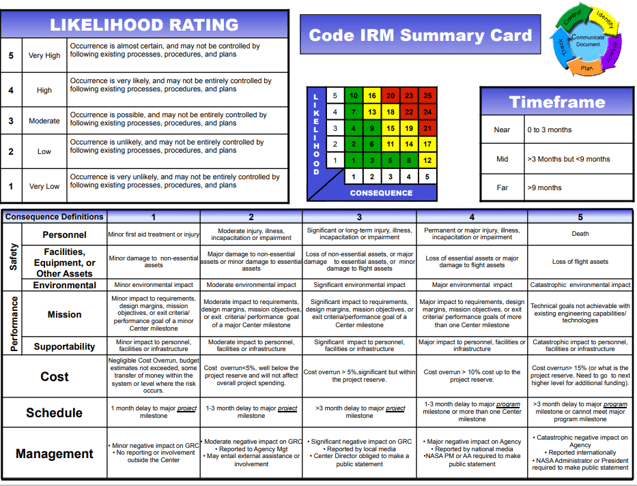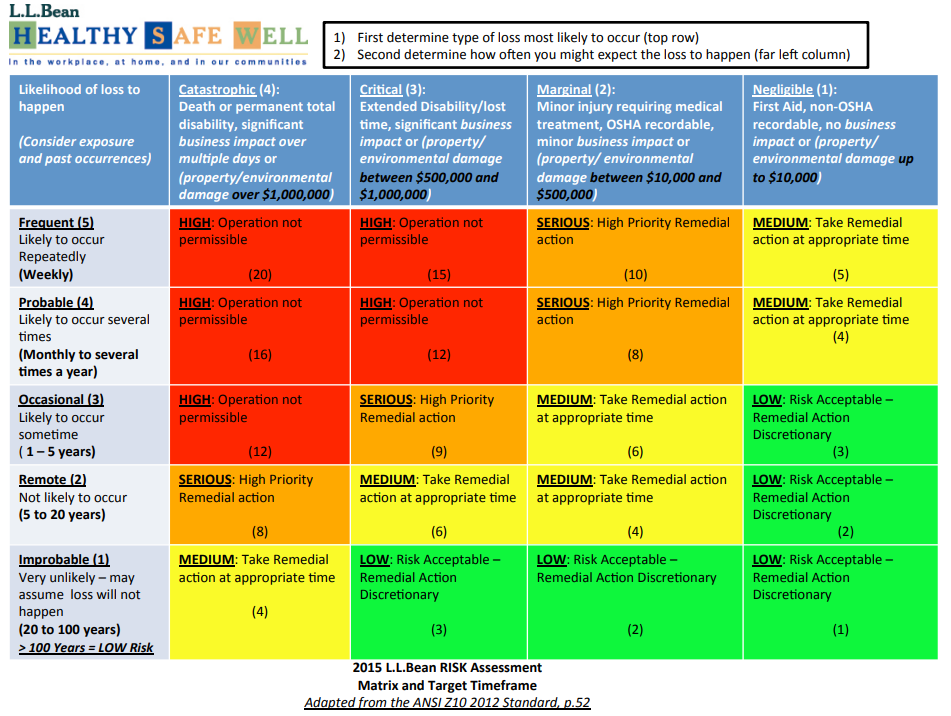When assessing safety risks within the workplace, you can take a proactive approach by earning an American Society of Safety Professionals (ASSP) Risk Assessment Certificate. If the well-being of those within your facility is a concern to you, this guide will help you understand why you should earn one of these certificates.
According to the U.S. Bureau of Labor Statistics (BLS), there are over 2 million reported cases of non-fatal injuries in the workplace. Incidents decreased by around 100,000 cases in prior years.
Safety experts attribute this to the incline in organizations making risk assessment a priority. Earning a risk assessment from the ASSP is one way to prioritize safety throughout your facilities.
In this article, you will learn more about the ASSP. You will also discover the standards for earning a risk assessment certificate and the goals and core competencies safety professionals must demonstrate to earn their certification.
Key Takeaways
- Learn what the ASSP is and ways to earn a Risk Assessment Certificate by taking the ASSP courses offered to safety professionals.
- Discover each of the primary ASSP Risk Assessment Certificate standards and what each of them entails, including the Z10.0, ISO 31000, and Z590 series.
- The goals of these certificates are to educate, improve training, provide a platform, and deliver a center of excellence.
- The core competencies of OSH professionals begin with upholding sustainable safety management systems. You must also demonstrate the ability to communicate risks to stakeholders.
- Reasons to earn a risk assessment certificate from ASSP include establishing credibility and commitment to safety, gaining a competitive edge, and maximizing earning potential, among others.
What is the ASSP?
The ASSP is the selected authority for the education of safety professionals. The organization provides valuable training and education on various topics, including safety and risk assessment.
You can become an expert in risk assessment by earning a Risk Assessment Certificate. By taking the ASSP courses, you learn:
- To complete all stages of the risk assessment process
- How to perform a risk assessment by overseeing the identification and prioritization of the hazards and controls within an organization
- To support risk reduction strategies and efforts
- The most effective methods to measure the efficacy of risk assessment processes and results
ASSP Risk Assessment Certificate Standards
The tools and methods of risk assessment are constantly evolving. Your facility can stay up to speed with Occupational Safety and Health (OSH) standards with the help of the ASSP. These standards reflect specified best practices in safety principles in the United States and worldwide.
By taking courses found in the standards library, you can earn an ASSP Risk Assessment certificate to showcase your knowledge and implementation of the safety standards. Here is a breakdown of the primary standards for earning an ASSP Risk Assessment certificate:
ANSI/ASSP Z10.0
The Z10.0 standard established OSH management systems that enhance staff safety and reduce risks throughout the workplace. It allows you to create better working conditions. This comprehensive safety system provides an architecture that organizations can customize based on needs.
ANSI/ASSP Z690 (ISO 31000), Risk Management
The ISO 31000 standard offers uniform risk management practices guidelines. These procedures improve workplace safety and establish a routine risk management language. They also outline safety principles and demonstrate risk management techniques.
The ISO 31000 standards courses include:
- ANSI/ASSP/ISO 31000-2018 Guideline for Risk Management
- ANSI/ASSP/ISO/IEC 31010-2019 Techniques for Risk Assessment
- ASSP TR-31010-2020 Safety Practitioners Techniques Technical Report
- ANSI/ASSP Z690.1-2011 Risk Management Vocabulary (ISO Guide 73:2009 National Adoption)
- ISO/ANSI/ASSP TR-31004-2014 Technical Report
- ANSI/ASSP/ISO Package for Risk Management
ANSI/ASSP Z590.3, Prevention Through Design
The Z590.3 standard assists safety professionals and employers implement risk prevention with design concepts. It provides insights related to design elements of work processes, premises, equipment, tools, machinery, and substances. It allows organizations to balance occupational safety and health goals.
Core Risk-Related Competencies
The goals of an ASSP Risk Assessment Certificate include educating safety professionals and improving risk-related training. The aim is also to provide a platform for the OSH community to contribute to safety standards and deliver a center for excellence.
As effective risk managers, OSH professionals must demonstrate these core competencies:
- Implement and uphold sustainable safety management systems
- Show knowledge of risk management principles, terms, and guidelines and the ability to effectively execute them
- Adhere to basic concepts of diverse standard risk assessment strategies
- Accurately complete a risk assessment and design safety review for new and redesigns
- Incorporate enterprise corporate sustainability of risk management through business planning and decision-making
- Establish acceptable risk, analyze risk assessments, and prioritize and establish risk control dashboards and metrics
- Determine workplace risks and hazards utilizing a hierarchy for controlled decision-making to reduce risk to acceptable levels
- Monitor the efficacy of risk control measures
- Identify situations that could cause serious injuries or fatalities
- Change processes to mitigate risks when possible
- Determine risk factors and prevention controls in a project's construction phase
- Have the ability to communicate risks to stakeholders in all stages within the operational setting
Why Earn a Risk Assessment Certificate from ASSP
ASSP supplies high-quality safety training and education OSH professionals can put into practice immediately. They offer advantages in your workplace, throughout any sector, and for all safety professionals.
These advantages include:
- Establishing credibility and signifies a commitment to the safety profession
- Gaining a competitive edge and maximizing earning potential
- Becoming an integral and valuable resource for workers and throughout your organization
- Growing a professional network by learning side by side with other safety specialists
- Understanding and integrating best practices from leading enterprises
ASSP Risk Assessment Sample
To get an idea of what an ASSP risk assessment would look like, take a look at the sample from an L.L.Bean risk assessment from 2015:
This chart shows you the level of risk, the likelihood of loss that would follow, and the frequency at which these events may occur.
Chicago Faucets Wants to Ensure the Health and Safety of Your Building
At Chicago Faucets, the safety and well-being of those who patronize, visit, or live within the facilities you own or manage are one of our top priorities. That is why we manufacture products that help you design healthy buildings. We also provide information about sustainable building practices in our Education Center.
Do you want more information about how to earn an ASSP certificate? Contact us today or check out our Education Center on our website.
.png)



